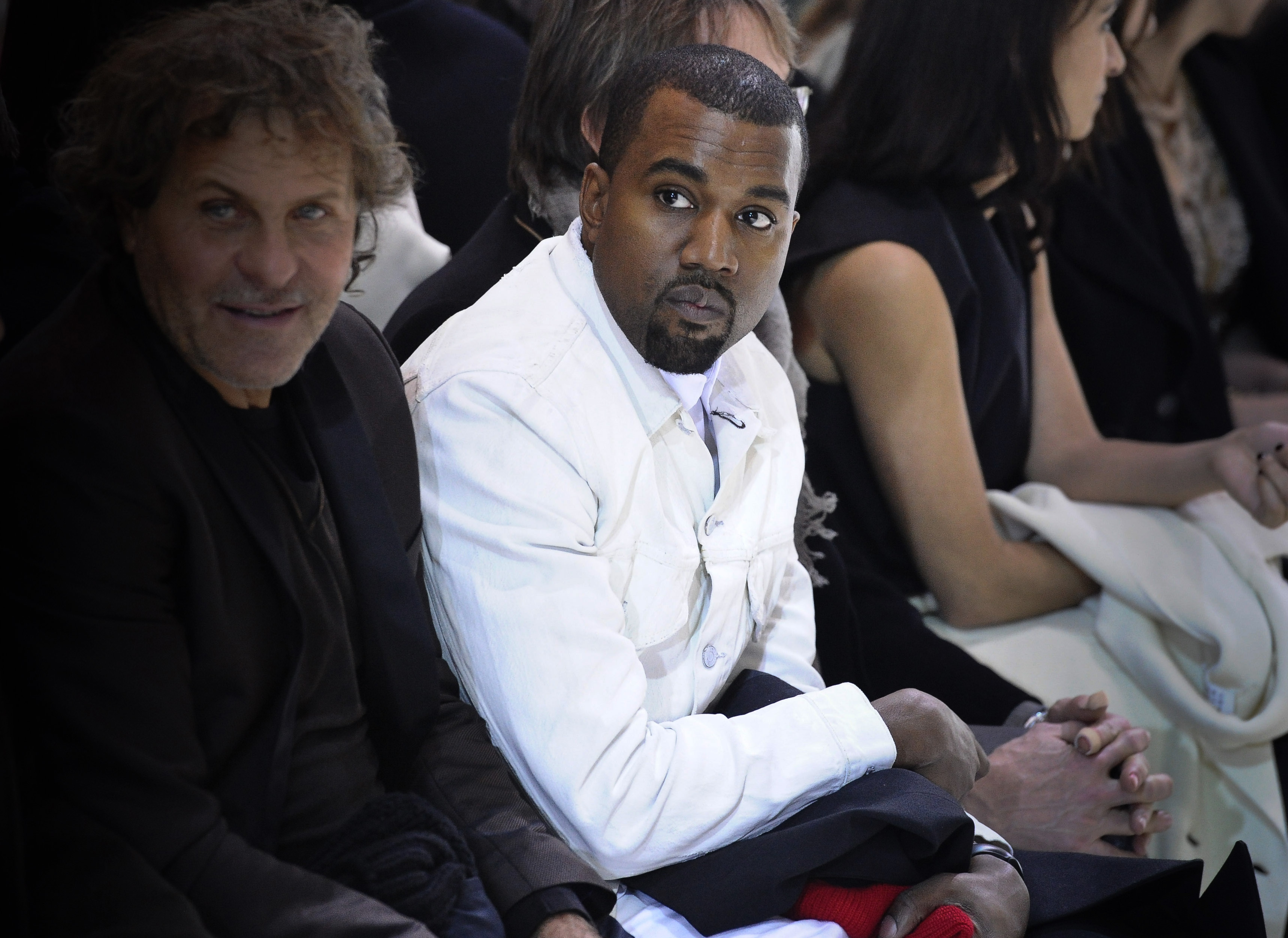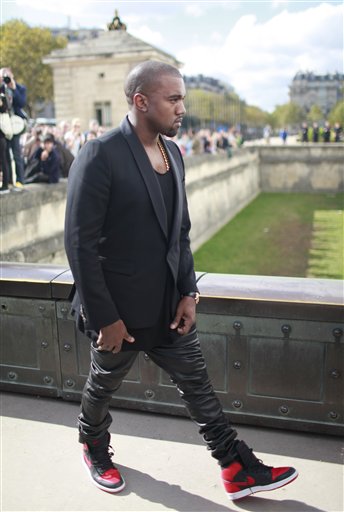For fashion, if it’s all white, it’s all right
By Britt Julious

For fashion, if it’s all white, it’s all right
By Britt Julious
Fashion is one of the last major industries to publicly and profoundly act as a system of discrimination and exclusivity. And Kanye West – despite his strange and inaccurate comments comparing his fiance, Kim Kardashian, to the FLOTUS, Michelle Obama – has recently come out with comments that touch on the industry’s perpetual exclusion.
In an interview with Ryan Seacrest on KIIS-FM, he said, “What I want to create isn’t about black and white, but the reason why I’m not able to create what I want to create is about being black, and is about classism.”
The music industry works differently. It is not less racist, but it is more inclusive. It is driven more by profit (allowing for a more diverse array of voices) than by inclusiveness or exclusiveness.
Although the music industry also has a long history of cultural appropriation, the vast numbers of musicians and output has allowed people of color to flourish and cross boundaries in successes that can still be found in other industries such as the film, television, and yes, fashion industries.
Kanye has not yet differentiated the two industries and he exists with a worldview in which success in one area can translate to another. His quotes may seem silly or idealistic, but they actually reflect a progressive challenge to the fashion industry that has yet to budge on its methods of exclusion.
We allow the fashion industry to exist in this world of exclusivity and have for too long. It remains under the radar and most discussions about its exclusivity happen sporadically and only within its close, small circles. We’ll see an editorial or two from a feminist or women’s-oriented website. But for the most part, the general public does not understand how little the industry values inclusion.
For most of us, our interactions with fashion are through the trends that have been reinterpreted from the runways and mass produced. We are not on the direct lines of the design process, the model selection, or the print publications. There is less choice for the public which makes it easier to exclude our voices.
This is more difficult in areas like film and television, where our choices to watch – or not watch – have ripples that affect projects already on the air or in theaters and those in development. Although the last step in the Hollywood cycle, our direct participation is a key component to decisions made for the future (Consider the success of the first Spiderman and the glut of superhero movies we’ve endured within the past decade as a result.).

Recall the recent lawsuits filed against the Barneys department store in New York City by two black customers. In one case, a young man named Trayon Christian was accosted by the NYPD under suspicion that he used a fraudulent credit card to purchase a $349 Salvatore Ferragamo belt. But the debit card and identification used to purchase the belt were his. These are clear cut examples of racial profiling, inherent to the very fabric of the fashion world. Underlying these incidents is the idea that black people can not possibly participate in the overpriced world of Barneys. Even if their forms of identification and debit cards form no problem (as was the case with the two lawsuits), their mere presence is cause for alarm.
West confirmed as much in a recent 10-minute “rant” during his Yeezus tour about the fashion industry, comparing the incidents to the lyrics in his single “New Slaves” (“You see it’s broke nigga racism, that’s that ‘Don’t touch anything in the store,’ and it’s rich nigga racism, that’s that ‘Come here, please buy more.).
Soon after the Barneys controversy began, Jay Z, a collaborator with the store, said:
“I am against discrimination of any kind, but if I make snap judgements, no matter who it’s towards, aren’t I committing the same sin as someone who profiles?”
The prolific rapper and business man claimed that ending his collaboration with the store would ultimately hurt his foundation, The Shawn Carter Foundation, that stands to receive, “25% of all sales from the collaboration, 10% of all sales generated in the store on November 20th and an additional donation from Barneys.”
Rarely can someone outside of the industry breakthrough and Jay Z’s comments reflect the isolation, exclusivity, and change the system places on who they accept.
Although he claims his decision to not pull out of the collaboration is solely about the lost funding opportunity for his foundation, he also makes a point of comparing the discrimination felt by the two customers to making “snap judgments” about the character of the store and its employees.
Any rational person can understand that these two situations are in no way one in the same. Discriminating against black customers further perpetuates a hostile environment of who is and is not included in the elite fashion world. Making judgments about Barneys documented actions against black customers creates an opportunity to create change, to eliminate that environmental hostility.
The runways themselves are a perfect example too of the structural order. Rarely will one see a non-white face. Who belongs and who does not can be seen from the top (business executives, fashion designers) down. According to the New York Times,
“After a notable increase in 2009 that followed extensive news media coverage, the representation of black models has remained fairly steady until this year, when they accounted for only 6 percent of the looks shown at the last Fashion Week in February (down from 8.1 percent the previous season); 82.7 percent were worn by white models.”
Kanye West’s obsession with the fashion industry is an important one and his comments must play out on a world stage. While seemingly humorous, in fact, they highlight the very real barriers between what is and is not considered fashion. It is absurd to Kanye that he (and his fiance, Kim Kardashian) have been excluded because of their successes and infamy. But those two things are not enough for an industry that largely incorporates non-white people only as the labor to hem and stitch and toil and nothing else. Certain bodies belong and others do not. Anything that differs from this structure must be an affront to its natural order.
In fashion, it is inherently “not good” and “not right” because it is different. It is not white.
Britt Julious writes about race and culture in and outside of Chicago. Follow Britt’s essays for WBEZ’s Tumblr or on Twitter @britticisms.

